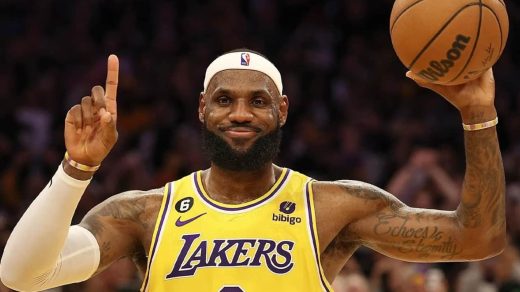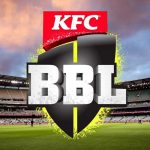The Dallas Mavericks vs OKC Thunder match player stats tell a fascinating story of one of the NBA’s most compelling current rivalries.
These Western Conference contenders have developed a competitive dynamic that showcases the contrasting approaches to team building in today’s NBA.
The Mavericks, led by international superstar Luka Dončić, represent a star-centric approach with complementary pieces strategically added around their franchise cornerstone.
Meanwhile, the Thunder have embraced a methodical rebuild centered around Shai Gilgeous-Alexander, supplemented by emerging young talents like Chet Holmgren and Jalen Williams.
Each matchup between these teams provides not just entertainment but valuable insights into different philosophies of constructing a championship contender.
Recent encounters have featured remarkable individual performances, strategic coaching battles, and moments of brilliance that have delighted basketball purists.
The statistical narratives emerging from these games reveal patterns that help explain why certain strategies succeed while others fall short.
For fans interested in understanding basketball beyond the box score, the Mavericks-Thunder rivalry offers a perfect case study in how modern NBA basketball operates at its highest levels.
Dallas Mavericks Vs OKC Thunder Match Player Stats

This guide will break down every aspect of this rivalry, from star performances to coaching strategies, providing both casual fans and dedicated analysts with the tools to appreciate the depth and complexity of these matchups.
The Evolution of the Mavericks-Thunder Rivalry
What makes the Mavericks-Thunder rivalry particularly intriguing is how quickly it has developed into a must-watch matchup despite lacking the historical foundation of classic NBA rivalries:
- Recent emergence: Unlike longstanding rivalries with decades of history, this matchup has intensified primarily over the last few seasons
- Contrasting timelines: The Mavericks are in win-now mode with established stars, while the Thunder balance present competitiveness with future potential
- Stylistic differences: Dallas emphasizes half-court execution and three-point shooting, while Oklahoma City leverages athleticism and defensive pressure
- Roster construction philosophy: Both teams represent different approaches to building a contender in today’s NBA
The rivalry has gained momentum as both teams have found themselves competing for similar positions in the Western Conference standings.
Games between these teams frequently carry playoff implications, adding stakes that elevate the intensity of each encounter.
Head-to-Head Statistical Analysis
A comprehensive statistical comparison reveals interesting patterns in how these teams match up:
| Category | Mavericks (Season) | Mavericks (vs. Thunder) | Thunder (Season) | Thunder (vs. Mavericks) |
|---|---|---|---|---|
| Points Per Game | 115.3 | 112.3 | 113.8 | 108.7 |
| Field Goal % | 47.2% | 47.5% | 46.9% | 45.8% |
| 3-Point % | 37.4% | 38.2% | 36.2% | 35.9% |
| Rebounds Per Game | 43.2 | 44.1 | 44.9 | 45.3 |
| Assists Per Game | 24.8 | 25.7 | 23.5 | 22.4 |
| Steals Per Game | 7.1 | 7.4 | 8.3 | 8.0 |
| Blocks Per Game | 4.8 | 4.5 | 6.2 | 5.9 |
| Turnovers Per Game | 12.7 | 13.2 | 13.3 | 14.5 |
This data reveals several key insights:
- The Mavericks maintain their offensive efficiency against the Thunder slightly better than OKC does against Dallas
- Both teams see a slight dip in scoring compared to their season averages when facing each other
- The Thunder’s athletic advantage shows in categories like rebounds, steals, and blocks
- Ball security becomes more challenging for both teams, but particularly for the Thunder
- The Mavericks’ playmaking edge becomes more pronounced in their head-to-head matchups
These statistical trends help explain why games often follow certain patterns, with the Mavericks seeking to control pace and limit turnovers while the Thunder aim to create transition opportunities through defensive activity.
Star Duels: Dončić vs. Gilgeous-Alexander
At the heart of this rivalry is the matchup between two of the NBA’s most gifted young stars:
Luka Dončić’s Impact Against the Thunder
Luka Dončić has consistently elevated his game when facing the Thunder:
- Scoring volume: Averages 33.3 points per game (compared to 32.8 season average)
- Playmaking excellence: 11.3 assists per game (compared to 9.1 season average)
- Rebounding presence: 11.5 rebounds per game (compared to 9.7 season average)
- Efficiency metrics: 52% effective field goal percentage against OKC
What makes Dončić particularly effective against the Thunder is his ability to:
- Exploit defensive mismatches through intelligent pick-and-roll manipulation
- Control game tempo by alternating between aggressive drives and methodical playmaking
- Read defensive adjustments and counter with appropriate offensive responses
- Elevate in clutch moments, consistently delivering in high-pressure situations
His combination of size, skill, and basketball intelligence creates persistent challenges for the Thunder’s defensive schemes.
Shai Gilgeous-Alexander’s Evolution
Shai Gilgeous-Alexander has developed into an elite performer who particularly shines in the spotlight of matchups against Dallas:
- Scoring efficiency: Maintains his remarkable 51% field goal percentage despite increased defensive attention
- Driving mastery: Leads the NBA in drives per game, a skill particularly effective against Dallas
- Defensive impact: Averages 2.3 steals per game against the Mavericks (above his season average)
- Leadership presence: Sets the tone for the young Thunder squad through his composure and work ethic
His performance against the Mavericks demonstrates:
- Improved shot creation against elite defenders
- Strategic patience in picking spots to attack
- Defensive anticipation leading to transition opportunities
- Clutch performance in tight games
The contrasting styles of these two superstars—Dončić’s methodical brilliance versus Gilgeous-Alexander’s smooth efficiency—creates a compelling individual battle within the team context.
Supporting Cast Showdown
While star performances capture headlines, the contributions of supporting players often determine outcomes in closely contested games:
Mavericks Key Contributors
Kyrie Irving has proven to be a difference-maker in this matchup:
- Scoring versatility: Averages 25.8 points on 48% shooting against the Thunder
- Clutch performance: 54% shooting in “clutch time” (last 5 minutes of close games)
- Playmaking complement: 5.6 assists per game while maintaining low turnover numbers
- Defensive improvement: Has shown increased commitment to perimeter defense
P.J. Washington provides critical two-way value:
- Defensive versatility: Successfully guards multiple positions including Gilgeous-Alexander in stretches
- Spacing contribution: 38% three-point shooting against OKC creates driving lanes
- Hustle statistics: Leads the team in deflections and contested shots in these matchups
- Screen quality: Creates advantages for Dallas guards through effective picks
Tim Hardaway Jr. offers microwave scoring:
- Three-point volume: Attempts 7.2 threes per game against OKC, hitting at a 40% clip
- Scoring bursts: Often provides momentum-changing runs of multiple baskets
- Spacing impact: Forces Thunder defenders to stay attached, opening driving lanes
Thunder’s Rising Supporting Cast
Chet Holmgren brings unique skills to the matchup:
- Rim protection: Averages 3.2 blocks against Dallas, altering countless other attempts
- Shooting versatility: Stretches the floor with 37% three-point shooting
- Pick-and-roll diversity: Can both pop for jumpers or roll for lobs
- Development trajectory: Has shown improvement in each successive matchup
Jalen Williams contributes efficient offense:
- Scoring efficiency: Maintains 54% field goal percentage against Dallas
- Complementary role: Thrives as a secondary creator alongside Gilgeous-Alexander
- Defensive effort: Takes on challenging perimeter assignments
- Transition excellence: Converts at a high rate in fast break situations
Josh Giddey provides playmaking and rebounding:
- Court vision: Averages 7.4 assists against Dallas
- Rebounding advantage: Uses size at his position to secure 8.2 rebounds per game
- Complementary playmaking: Takes creation pressure off Gilgeous-Alexander
- Improvement areas: Working to become more consistent as a shooter
The depth and specific skill sets of these supporting players create fascinating chess matches as coaches seek advantageous matchups throughout games.
Tactical Battle: Coaching Strategies
The coaching matchup between Jason Kidd and Mark Daigneault represents a fascinating strategic duel:
Mavericks’ Strategic Approach
Under Kidd’s guidance, the Mavericks employ specific tactics against the Thunder:
- Deliberate pace control: Slowing the game to limit OKC’s transition opportunities
- Defensive switching scheme: Using versatile defenders to maintain coverage through screens
- Three-point volume: Emphasizing high-quality three-point attempts to maximize efficiency
- Star staggering: Carefully managing Dončić and Irving’s minutes to ensure one is always on court
- Fourth quarter execution: Running specific sets in closing minutes to create high-percentage looks
These approaches reflect Kidd’s philosophy of controlled, intelligent basketball that leverages the Mavericks’ experience advantage.
Thunder’s Counter Strategies
Coach Daigneault has implemented systems that maximize his team’s strengths:
- Defensive pressure: Aggressive perimeter defense designed to create turnovers
- Transition emphasis: Pushing pace after both makes and misses to leverage athleticism
- Pick-and-roll variations: Multiple screening actions to create advantages for ball handlers
- Defensive adjustment packages: Prepared variations to counter Mavericks’ offensive sets
- Development focus: Balancing competitive tactics with opportunities for young player growth
The Thunder’s approach reflects both their current competitive goals and their long-term development vision for a young roster.
In-Game Adjustments
What makes this coaching matchup particularly compelling is how both coaches adapt throughout games:
- Defensive coverage changes: Both teams frequently alter how they defend key players
- Lineup experimentation: Finding effective combinations based on performance patterns
- Timeout usage: Strategic timing of timeouts to interrupt momentum or set up crucial plays
- Fourth quarter tactics: Specific approaches for end-game situations
These adjustments demonstrate the chess match that unfolds beyond the visible action on the court.
Game Environment and Home Court Factor
The atmosphere surrounding Mavericks-Thunder games adds another dimension to this rivalry:
American Airlines Center Impact
When games are played in Dallas:
- The Mavericks shoot 2.3% better from three-point range
- Dallas averages 4.2 more free throw attempts per game
- The Mavericks’ bench scores 5.7 more points on average
- Crowd energy visibly impacts momentum swings, particularly after highlight plays
Paycom Center Advantage
When games are held in Oklahoma City:
- The Thunder generate 3.8 more fast break points
- OKC secures 2.5 more offensive rebounds per game
- Thunder role players show notable statistical improvements
- The young, energetic crowd creates a challenging environment for visitors
The home court advantage in this rivalry demonstrates how external factors can influence performance and outcomes beyond pure basketball execution.
Statistical Deep Dives: Beyond Basic Numbers
Advanced metrics provide deeper insights into the dynamics of this matchup:
Lineup Effectiveness
The most effective five-man lineups in recent matchups:
Mavericks’ optimal lineup: Dončić-Irving-Hardaway Jr.-Washington-Lively
- +12.4 points per 100 possessions
- 58.3% effective field goal percentage
- 22.1% defensive turnover rate
Thunder’s optimal lineup: Gilgeous-Alexander-Giddey-Williams-Dort-Holmgren
- +8.7 points per 100 possessions
- 53.9% effective field goal percentage
- +5.2% rebound advantage
These lineup statistics reveal which combinations have found the most success and provide insights into potential adjustments for future matchups.
Possession Analysis
Breaking down possession types shows interesting patterns:
- The Mavericks derive 42.3% of their points against OKC from half-court pick-and-roll actions
- The Thunder score 19.8% of their points against Dallas in transition situations
- Dallas creates 4.2 more three-point attempts per game through drive-and-kick actions
- OKC generates 5.7 more paint touches per game than their season average
These tendencies highlight the contrasting offensive approaches and how each team attempts to impose their preferred style.
Clutch Performance Metrics
In “clutch time” situations (last five minutes of games within 5 points):
- Luka Dončić maintains a 58.6% true shooting percentage
- Shai Gilgeous-Alexander posts a 56.2% true shooting percentage
- The Mavericks’ offensive rating drops to 107.3 (from 115.8 overall)
- The Thunder’s offensive rating drops to 104.5 (from 113.8 overall)
This data suggests that while both teams experience the expected offensive efficiency decline in high-pressure situations, the Mavericks maintain a slightly higher effectiveness level.
Player Development Storylines
The evolution of key players adds narrative depth to this rivalry:
Mavericks’ Player Growth
- Luka Dončić has improved his conditioning and defensive commitment
- Kyrie Irving has settled into a more defined role alongside Dončić
- P.J. Washington has expanded his offensive repertoire beyond spot-up shooting
- Young players like Dereck Lively II are developing through meaningful minutes
Thunder’s Development Trajectory
- Shai Gilgeous-Alexander has elevated to true superstar status
- Chet Holmgren has quickly adapted to NBA competition after missing his first season
- Jalen Williams has emerged as a reliable secondary creator
- Josh Giddey continues to refine his unique size-playmaking combination
These development arcs provide context for understanding how the rivalry may evolve in coming seasons as players continue to grow and adapt.
Future Outlook and Predictions
Looking ahead, several factors will shape the continued evolution of this rivalry:
Short-Term Projections
For upcoming matchups, expect:
- Increased strategic emphasis on three-point shooting from both teams
- More aggressive Thunder defense against Dončić in pick-and-roll situations
- Mavericks focus on limiting transition opportunities for OKC
- Growing responsibility for supporting players as defensive attention on stars intensifies
Long-Term Rivalry Development
Over the next several seasons:
- The Thunder’s young core will continue maturing, potentially shifting the competitive balance
- The Mavericks will face decisions about roster construction around their established stars
- Tactical innovations will emerge as coaches gain more familiarity with opponent tendencies
- The stakes will likely increase as both teams contend for higher playoff positions
This rivalry appears positioned to become one of the Western Conference’s most compelling matchups for years to come as both franchises pursue championship contention through different but equally valid approaches.
Fan Experience and Media Coverage
The growing popularity of this matchup has influenced how it’s presented and consumed:
Broadcast Enhancements
Networks have responded to increased interest with:
- Specialized graphics packages highlighting key statistical matchups
- Tactical breakdowns during broadcasts explaining strategic elements
- Mic’d up segments providing insight into coaching communication
- Advanced statistical integration offering deeper analytical perspectives
Social Media Engagement
These games generate significant online activity:
- Player highlight compilations regularly trend across platforms
- Strategic analysis threads from basketball experts provide depth
- Fan reaction videos capture the emotional investment in outcomes
- Statistical debates about player performance fuel ongoing conversations
The digital footprint of this rivalry continues to expand, creating community engagement beyond the games themselves.
FAQs on the Mavericks-Thunder Rivalry
- How have the Mavericks and Thunder performed against each other historically?
While the Mavericks hold a slight historical advantage in the all-time series, recent seasons have seen more competitive balance as the Thunder’s young core develops. The most recent matchups have featured closer games with multiple lead changes and several contests decided in the final minutes, indicating an increasingly even rivalry.
- Which player matchups are most interesting to watch in these games?
Beyond the headline Dončić vs. Gilgeous-Alexander duel, fascinating matchups include Holmgren vs. the Mavericks’ frontcourt (his unique skill set creates defensive challenges), Irving vs. Dort (a classic offensive wizard against defensive specialist scenario), and Washington vs. Williams (versatile forwards with expanding roles).
- What makes the coaching matchup between Kidd and Daigneault noteworthy?
Jason Kidd brings Hall of Fame playing experience and a focus on controlled execution, while Mark Daigneault represents the analytical new generation of coaches with development expertise. Their contrasting backgrounds and approaches create a compelling strategic battle that evolves with each matchup.
- How do the teams’ different playing styles affect the dynamics of these games?
The Mavericks prefer a more deliberate pace with emphasis on half-court execution and three-point shooting, while the Thunder thrive in transition situations leveraging their athletic advantages. These stylistic differences create a natural tension as each team attempts to impose their preferred tempo and approach.
- Which team’s approach is better positioned for long-term success?
Both approaches offer valid paths to contention. The Mavericks’ star-centric model maximizes their current championship window but may have sustainability challenges, while the Thunder’s development-focused approach may need time to reach its ceiling but could provide a longer competitive window. The contrast makes this rivalry a fascinating case study in NBA team building.
- What statistical trends should fans watch for in future matchups?
Key indicators include three-point volume and efficiency (a Mavericks advantage when executed well), turnover differential (often favoring Dallas due to experience), fast break points (a Thunder strength), and fourth quarter scoring efficiency (where experience often becomes most valuable).
- How has the rivalry been affected by roster changes and trades?
The addition of Kyrie Irving to pair with Dončić significantly changed the Mavericks’ ceiling and approach, while the Thunder’s selection and development of Chet Holmgren added a dimension that creates matchup problems for Dallas. These personnel changes have added new strategic layers to the rivalry.
- What are the playoff implications of these regular season matchups?
With both teams competing in the Western Conference’s middle-to-upper tier, their head-to-head results often have direct seeding implications. The psychological edge gained from regular season success may also prove valuable should these teams meet in a playoff series, making each regular season encounter particularly meaningful.
Also Check:
- How to Watch the NCAA Championship Game Without Cable
- How to Watch Out of Market NFL Games
- Dallas Mavericks Vs Boston Celtics Timeline
- Denver Nuggets vs Timberwolves Match Player Stats
Conclusion: Why This Rivalry Matters
The Dallas Mavericks vs. OKC Thunder rivalry represents more than just an entertaining basketball matchup—it embodies contrasting philosophies about how to build a championship contender in today’s NBA.
The Mavericks’ approach centers on maximizing their current window with established stars, while the Thunder balance present competitiveness with long-term development. This tension creates compelling basketball that rewards close attention.
The statistical narratives emerging from these games tell stories of tactical chess matches, individual brilliance, and the fine margins that determine success at the highest levels of professional basketball.
For fans seeking to understand the game more deeply, few matchups offer as much analytical value as Mavericks-Thunder contests.
As this rivalry continues to evolve, it promises to remain a highlight of the NBA calendar—a showcase for exceptional talent, strategic innovation, and the pure competitive spirit that makes basketball such a captivating sport.
Whether viewed through the lens of star performances, coaching tactics, or statistical trends, these games consistently deliver basketball at its most compelling.








